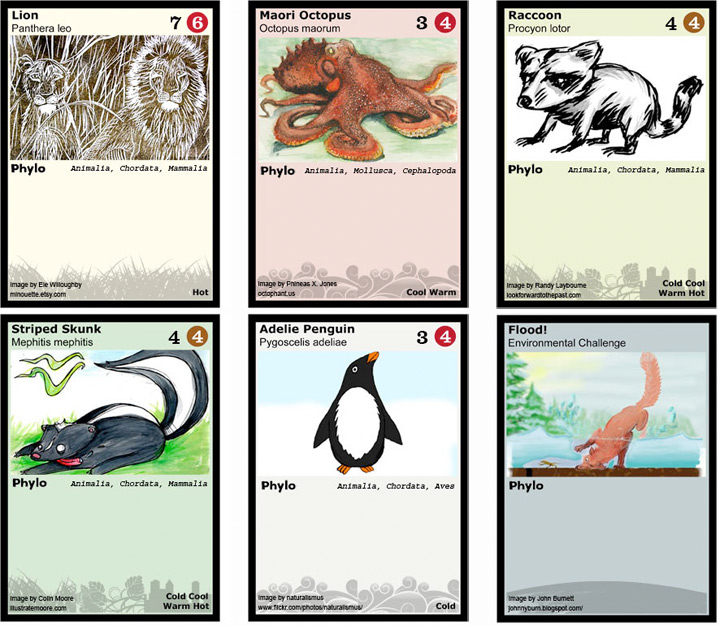 |
| POKEMON CHARACTERS. PHOTO: REDDIT.COM/USER/AVALON_ |
"If you can't beat them, join them." Pokémon remains immensely popular, and in a bid to raise interest amongst the young on biodiversity, conservationist and scientists are taking a leaf out of the book (or rather, out of the game), and tapping on Pokémon's success by starting the Phylo Project and introducing a new trading card game called "Phylo: The Trading Card Game". The game aims to expose children to the various plants and animals using trading cards with genuine species, and includes information on their habitat, kingdom and diet (Collins, 2014). Additionally, real-life environmental threats such as climate change and oil spills will also be incorporated into the game to raise awareness of the situation and threats faced by species in our environment.
 |
| PHYLO TRADING CARDS. PHOTO: SCQ.UBC.CA/BIODIVERSITY.HTML |
The fact that Pokémon has withstood the test of time and continues to remain popular among a new wave of young children is impressive. If only the craze and popularity of this video game series can be translated to a genuine interest and passion for the environment and biodiversity. With increasing urban population, young children of today will be the futures of tomorrow. Hence, biodiversity education is important to capture the interest of the young and teach them the beauty of biodiversity and nature, ensuring that they remain motivated and inspired to protect these ecosystems in years to come. I'm sure Tajiri will be truly satisfied only if his work inspires others to protect what's left of the richness of species in our environment, more so then the popularity he gains or profits he receives.
That is all, but I'll like to leave you with an interesting journal article titled: 'It is a Pokémon world': The Pokémon franchise and the environment.
To all you Pokemon lovers out there, you're probably going to love the article.
Ps: I've a confession to make - I've never watched nor played Pokémon.
Literature Citied
Balmford, A., Clegg, L., Coulson, T., & Taylor, J. (2002) Why conservationists should heed Pokémon. Science, 295(5564), 2367-2367.
Collins, J. (2014) Pokemon power: finding fun in biodiversity. Available at: http://www.dw.de/pokemon-power-finding-fun-in-biodiversity/a-17504066
Accessed 18 October 2014].
Collins, J. (2014) Pokemon power: finding fun in biodiversity. Available at: http://www.dw.de/pokemon-power-finding-fun-in-biodiversity/a-17504066
Accessed 18 October 2014].
No comments:
Post a Comment